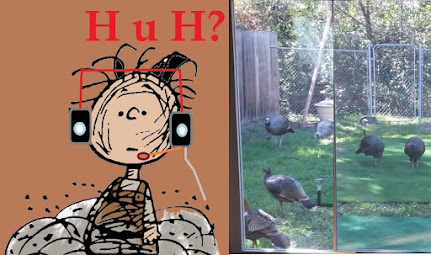In Part-1 of this Blog-series, I introduced the concept of the National Tune-Up Frequency,
a problem that has plagued radio amateurs since the early 1920's; i.e., nearly 100 Years ago.
Recently, after running several successful QRP radiosport GiGs, I came to realize that the NTF "problem" is largely fueled by people not realizing that even though your transceiver may be tuning
at considerably reduced power (say 20 watts) in relation to its overall 100-watt output, that reduced power is barely 6-db (1 s-unit) down from full power - i.e., your tuning attempt is nearly as loud as your regular signal. This is why we should ALWAYS listen before we tune-up.
This is ALSO where the use of Dummy Loads become so important.
According to VE3FDT back in 2011:
Just a quick summary of responses as I interpret them. Tuning-UP on someone's
CQ frequency happens for any or all of the following reasons:
- Malice.
- Ignorance.
- Intrinsic inability to think (a.k.a. stupidity).
- Reasons unknown and unfathomable.
hence the suggested course of action should be:
- Ignore it.
- Disregard it.
- Forget it.
"A lot of these what I like to call T.U.T.s (Tune Up Turkeys) think if they don't get that amplifier
tuned down to a gnat's ass exactly on the freq where they want to use it, then it won't work right.
Many seem to think (by their idiotic actions) that their amplifier final tank circuitry has zero bandwidth therefore requiring spot on tune ups. I agree with your suggestion of pop down the band a bit outside the active bandwidth, listen and do a quick tune-up. Should take less than 10 seconds to completely preset and tune the amp after a band change. To expedite my operating, I have my starting points
for each band/mode my amp covers on a small chart. I preset the LOAD and PLATE to the chart
and then, if necessary, I can tweak the controls during the first couple of calls to the DX in the pileup.
No one is bothered and life is good."
The last 20 years have brought us a number of different approaches to DSP notch filtering.
The Yaesu FT-2000 & FT-1000mp sport excellent AUDIO DNF circuits. Unfortunately, while we
may have notched an S-9+ signal out of the audio passband, it is still inside the receive passband, compromising the AGC system, and thereby reducing IF gain, dropping weaker signals below the signal-threshold, when they were perfectly readable BEFORE the interfering carrier started.
The Yaesu FTDX-5000 and FTDX-9000 transceivers, as well as the ICOM, 7600x, 7700x & 7800x transceivers all notch the offending signal INSIDE the receive passband, eliminating the tone as well
as any AGC dampening normally caused by such an offending signal. Even my ICOM-7000 utilizes
IF-based DNR & DNF.
Unfortunately, as useful as these circuits are for Ssb operation, being unable to distinguish
a continuous carrier from on/off keying such as RTTY and CW, ANF circuits are largely worthless
for these modes.
As it turns out, when running RTTY, Tune-Up Turkies (TuT's) who park EXACTLY on the Mark frequency often HELP my signal to be decoded on the other end. It has often helped the MMTTY decoder used with N1MM+ to decode signals with a "weak" mark tone.
The BoTTom-Line is that as long as there is amateur radio, there will be Tune-Up Turkies who live in an unconsciousness universe, completely oblivious to the impact their careless/poor operating habits create in/on the world they play around in.
.Jpg)



No comments:
Post a Comment